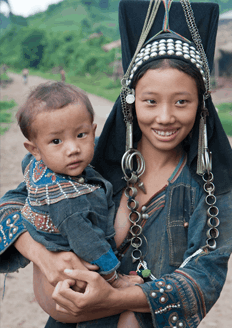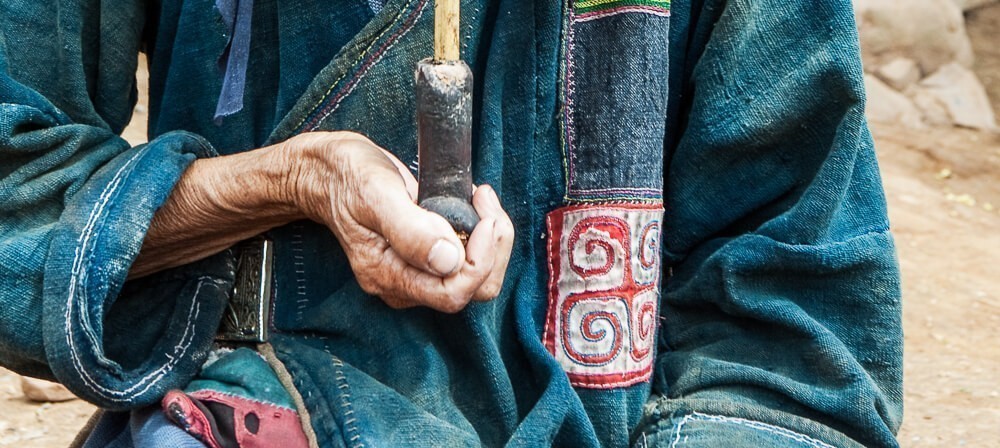The Akha migrated from China to Laos, Myanmar, Thailand and Vietnam over the past 200 years. Some of their villages can be found today in the far north of Laos, primarily Phongsaly and Luang Namtha provinces. Traditionally living in more upland areas, some Akha communities can be very remote.
While they used to be also called the Ko or Iko, these names are now considered impolite. The Akha comprises many different sub-groups and clans, who have maintained very strong identities and lifestyles.
Though the Akha do not have a written script, men are able to recite their genealogy going back over 60 generations. This has helped to maintain the Akha identity and history that links clans and families.
Akha villages can be easily recognized by their gates and large swings. The gate is considered a marker between the human and spirit worlds. It is believed to protect the village from outlaws, wild animals and disease. Visitors should never touch it. The village swing is used during the harvest festival in August or September, a time of fun and celebration.
Akha women are famous for their silver headdresses that come in different shapes and designs, depending on the Akha group, and can be very expensive. The Akha Djepia, for instance, wear a cone-shaped headdress, while the Akha Pouly headdress is more rounded, with a flat disc at the back. The Akha also wear indigo-dyed cotton clothing, decorated with embroidery, applique-work and beads.



